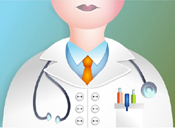Health Care IT: $31 billion 'perfect storm'


Raymond Falci, Managing Director, addressed the New York Software Industry Association this evening on the “Wall Street View” of the HCIT market opportunity.
The Healthcare Information and Management Systems Society trade organization and advocacy group annual convention held last month in New Orleans presented four primary themes for HCIT in 2007, Falci reported:
Interoperability (Standards-based sharing and integration)
Increasing Presence of Large IT Companies
Increasing Presence of Medical Device Companies
Electronic Health Records/Personal Health Records
There is a “perfect storm” in HCIT, Falci said, which will bridge favorable junctures in three domains:
Government, regulatory environment spurs increased discussion across Capital Hill,
Health care industry focus on IT as a workflow enabler for standards based medicine,
Technology foundation for interoperability due to HL7, HIPPA, DICOM.
Currently, however, “spaghetti” diagrams are the norm in medical environments and Falci showed a 20 prong one to illustrate IT fragmentation in the hospital encompassing:
Dozens of significant applications,
Millions in capital investment,
Average task requiring log-in and information from six disparate applications,
Increased fragmentation from in-house customization.
To move from “spaghetti” to optimized systems, the health care industry is targeting:
Clinical information systems: EHR/data warehousing
Department-specific apps
Standards-based medicine and IT-based workflow managementInteroperability/Connectivity, RHIOs
Workflow driven data integrationRevenue cycle management
Recapturing 25% of health care costsPayor information systems and services
Operations throughput, contract management
Consumer Directed Healthcare
Standardized-based medicineConsumer-driven business models
Personal health management
Revenue cycle management will be key, Falci underscored, with three-prong models:
Target Customers
Hospitals
Physician Groups
PayorsPoint of Entry in Revenue Cycle
Capture at point of care
Claim creation, coding
Payor receipt, analysis
Collections reconciliationDelivery Method
Software/IT Based
Web-based tool
ASP hosted software
Service/consulting based (workflow reengineering)
Software as a Service
Health care administrative software is a recent VC focus, according to Falci. Over the past 18 months about 40 venture capital deals were done in HCIT, with total funding at about $620 million. More than half of the companies financed focus on health care admin and about 20% on Decision Support Services.
Falci emphasized nevertheless that significant IT gaps across the health care continuum remain; Gaps to be filled by enterprising IT initiatives.
ALSO: Google’s medical push and Google Health URL trumped by Steve Case? and Google and Wal-Mart diagnose $4 trillion health care market and Microsoft to battle Google in online healthcare